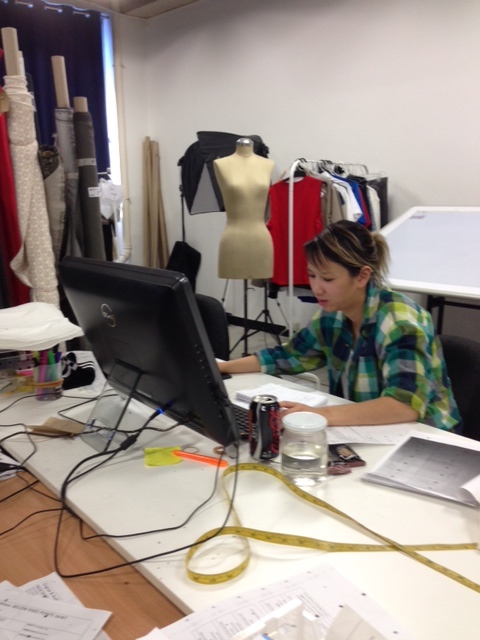Finding a Good Patternmaker

Firstly, I would like to say that I am sorry for the long spaces of time between blogs lately. We have been very busy at Sample Room. We have also been caught up in the employment process, looking for a new pattern maker for our team. It has been long and drawn out process, with a false start. In reflection, it has made me realize how hard it must be for you, the designer, to find a pattern maker that’s right for you. I thought it might be helpful for you to know how we select a pattern maker. This might also help you decide who you want to work with.
1. Understanding of the brief.
When a customer comes to Sample Room they are not just presenting a drawn garment. They are telling us who their target market is, the purpose for the style and who will wear it. It is then our job to create a pattern and garment to suit that customer. How low the neckline sits, how short the skirt is and how tight the garment fits are just some of the things we think about when designing a pattern
2. Are they a visual pattern maker or a spec pattern maker?
Some pattern makers need specs to make a pattern. This is the only way they can understand what the customer needs. We prefer pattern makers who understand both the customer and the look, and how to create a pattern for this look. It is important to have some measurements from the customer, such as length and circumference measurements. There is no benefit in being told by the customer after then garment is finished that the under bust should have been 75cm. That information is much more helpful before the pattern is made. Length measurements are also important. If a garment is drawn on a croque, it provides a better representation of the proportions. The bottom line is: if the measurement is important to you, it is important to us.
3. Style.
An in-depth knowledge of what is in fashion is important, so we are on the same page as our customers. An understanding of how a young girl is wearing a dress length or how a boyfriend jean should look is important. This allows us to use the same language as you, the customer, when we discuss your designs.
4. Speed and accuracy.
Personally, I would love to spend all day on one pattern but something tells me that you, the customer, would not like to receive this invoice. Accuracy is also a very important factor. By computer pattern making, we are able to tick both of these boxes. A pattern maker who would like to drape every pattern to a stand before a pattern is made, will probably have a hard time coming to terms understanding what it takes to create a pattern as a contract pattern maker.
5. Connection with the end customer.
Understanding what our customer needs is not only important at the initial design stage, but also at the fittings. Understanding the time constraints of a designer, the level of knowledge they have and the stresses involved in each person’s label is important to even start to offer the service we provide.
6. Respect.
Respect within our team and for our customer. We all work together as a team from the time you walk in the door, so there is no such thing as a silly question.
7. Personality.
This one is important to our workroom. We will be working next to them every day, so they need to fit in with our team.
8. The ability to follow Sample Room systems.
We work with a number of customers simultaneously and on over 100 garments at once. In order to make sure we cross all out T’s and dot all our I’s, we have many systems we need to follow. We double check designs and patterns back and forth between the team to make sure the information first spoken about is followed through. This is also the reason why, when you (the customer) comes in, there is a certain way we need the information presented before we can start the design process. Receiving all the information in one package is important so nothing is missed or mistaken.
Communication and Collaboration are key in our workroom
Communication and Collaboration are key in our workroom
Things I have learnt in finding a pattern maker .
The age or time someone has been a pattern maker is not a reflection of the quality of their pattern making – we actually prefer a younger pattern maker as they understand technology, are not set in their ways and are willing to work hard. They are quick and eager to learn.
If you don’t think someone is listening to you, they’re probably not.
The quality of the end product is directly related to the quality of the information given.
So there you have it: A crash course on how to employ a pattern maker, as a contractor or staff member.
We now have a fantastic second pattern maker. Welcome Ali to our team!
I am interested, what do you look for in a pattern maker?